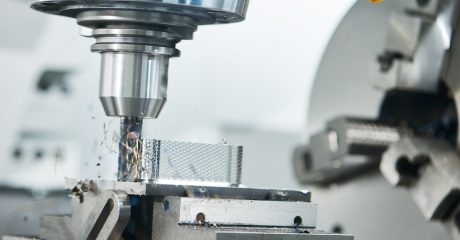Tool coatings can play a major role in the overall efficiency and longevity of the instrument. Knowing which coating is right for your operation is key to making sure things run smoothly. Keep reading for an in-depth look at various tool coatings.
Physical Coatings or Chemical Coatings?
These two main categories of coating each have different features. Physical coating is called Physical Vapor Deposition or PVD and are usually thinner. They are great for tools that don’t get exposed to high temperatures. Chemical coating is also called Chemical Vapor Deposition or CVD and can be exposed to exceptionally hot temperatures.
Coating Characteristics
There are characteristics you need to consider when deciding on a tool coating. Hardness can be one of the most important. One of the best ways to extend the life of your tools is to have a high surface hardness. Furthermore, water resistance is very important for protection from abrasion.
Surface lubricity is another valuable characteristic. An increase of friction can quickly shorten the lifespan of your tool, but a slick surface without roughness and irregularities can help chips slide off your tool, producing less heat and friction. This also increases your ability for higher speeds.
Oxidation temperature can also contribute to tool quality and life. The oxidation temperature points to when the treatment will start to break down. The higher the oxidation temperature is the more successful it will be when exposed to high heat situations.
Anti-seizure is the last characteristic we’ll mention. This decreases chemical reactivity between your tool and your cutting surface which helps keep material from depositing onto the tool. That can cause chipping or an oversized part.
Common Tool Coatings
Titanium Nitride (TiN)
This gold colored coating is one of the most common for general purpose drilling projects. The ceramic base has a solid hardness and a high oxidation temperature and is great for both cutting and forming.
Titanium Carbo-Nitride (TiCN)
Similar to the coating mentioned above, the carbon additive here increases the hardness and creates better surface lubricity by causing less friction. This is great for cutting aluminum.
Aluminum Titanium Nitride (TiALN)
A layer of dark gray aluminum oxide contributes to improved life in high heat applications. Typically used for carbide tooling lacking coolant. This coating is great for cutting steel.
Chromium Nitride (CrN)
This metallic and silvery coating provides similar benefits to TiCN, but can withstand increased temperatures without losing its improved lubrication and other qualities. It also contains good anti-seizure properties.
Let Custom Tools Extend the Life of Your Tool
We can help you with tool coating and many other services, come to our website to check out what we have to offer!
